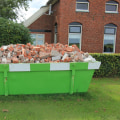After construction or remodeling, even a newly completed project can leave a lingering presence of dust, particles, and odors in the air, making it essential to clean the air thoroughly before fully settling back into the space. Construction dust, paint fumes, and other pollutants can irritate the respiratory system, exacerbate allergies, and, in severe cases, lead to health complications. Therefore, ensuring that the air in your home is clean is as crucial as tidying up visible dust and debris. With a few deliberate steps and the right tools, you can effectively remove airborne pollutants and create a healthier living environment in your home after construction.
Start with Proper Ventilation
The first step in cleaning the air after construction is ventilating your home. Open all windows and doors to encourage airflow and let out accumulated particles and fumes. Using fans to direct airflow out of the house can expedite the ventilation process, especially if you set up box fans in the windows facing outward to push contaminated air outside. If the weather permits, leaving windows open for several hours or even a full day will allow fresh air to circulate and replace indoor air. For homes in areas with high humidity, like the Pacific Northwest, keeping moisture out during this process is essential, as it can lead to problems like mold remediation in Seattle if not carefully managed.
Use Air Purifiers with HEPA Filters
High-efficiency particulate air (HEPA) purifiers are invaluable in removing airborne particles left after construction. HEPA air purifiers are designed to capture tiny particles, including dust, allergens, and even some volatile organic compounds (VOCs) that may linger in post-construction air. Place a HEPA purifier in the rooms where construction took place, and consider using additional purifiers throughout the home for better coverage. Allow the purifiers to run continuously for several days, as this will help clear out residual particles that may have settled into fabrics, carpets, and ventilation systems. For the best results, change or clean the purifier filters regularly, as these filters can become saturated with particles from heavily polluted air after construction.
Clean and Replace HVAC Filters
Construction dust often spreads throughout the house, infiltrating HVAC systems and air ducts. Dust that settles in these areas can continue circulating long after construction ends, making air filtration a critical step. Start by replacing the air filters in your HVAC system with high-quality filters, ideally HEPA-rated if compatible with your system. Additionally, clean or vacuum the vents to remove settled dust and debris. If construction work was extensive, it may be worth scheduling a professional duct cleaning service to ensure all particles are cleared from the ducts. Regular filter changes after construction can prevent dust and contaminants from continuously recirculating in your indoor air.
Dust and Wipe Down All Surfaces
Construction dust doesn’t only stay in the air—it settles on every surface, from walls and windowsills to furniture and light fixtures. Removing dust from these surfaces can significantly reduce the amount of airborne particles. Start by dusting high surfaces, such as ceiling fans, vents, and light fixtures, working your way down to shelves, furniture, and baseboards. Use a microfiber cloth or electrostatic duster to trap particles effectively, and avoid feather dusters, which can disperse dust back into the air. For smooth surfaces, a damp microfiber cloth can help capture particles rather than pushing them around. Consistently dusting and wiping down surfaces ensures fewer particles remain to circulate in the air.
Vacuum with a HEPA Vacuum
Using a vacuum cleaner with a HEPA filter is an excellent way to remove fine dust from carpets, rugs, and upholstered furniture. HEPA-filtered vacuums trap tiny particles, preventing them from being released back into the air. Begin by vacuuming all floors, including hard surfaces and carpets, moving slowly to capture as much dust as possible. Vacuum any fabric-covered furniture and soft items like drapes or cushions, as construction dust can cling to these materials and linger if not properly cleaned. Make sure to empty the vacuum canister or replace the bag frequently, as construction dust fills it up more quickly than regular dust and debris.
Wipe Down Walls and Windows
Construction dust often clings to walls and windows, especially if sanding or drywall work was part of the project. Wiping down walls with a damp cloth or sponge can capture dust that has settled on these surfaces, reducing the amount that becomes airborne. Use a non-abrasive cleaner if needed, especially for painted walls, to avoid damaging surfaces. For windows, a glass cleaner and microfiber cloth can remove dust, leaving the glass streak-free and clear. This step is essential for clearing out any remaining dust that could contribute to poor indoor air quality.
Maintain Indoor Plants for Natural Filtration
Indoor plants are natural air purifiers that can help remove toxins and improve indoor air quality over time. Certain plants, such as peace lilies, snake plants, and spider plants, are known for their ability to filter toxins from the air and produce oxygen. Adding a few of these plants to the rooms where construction took place can supplement other air-cleaning efforts. While plants aren’t a substitute for purifiers, they add an ongoing benefit to your home’s air quality by naturally absorbing pollutants and introducing a fresh, inviting feel to your renovated space.
Final Thoughts on Post-Construction Air Cleaning
After a construction project, cleaning the air in your home is a necessary step for creating a safe and comfortable environment. By ventilating the space, using HEPA filters in both purifiers and vacuums, wiping down surfaces, and refreshing HVAC systems, you can effectively remove airborne particles and lingering odors. Taking these proactive steps not only improves indoor air quality but also contributes to the health and well-being of everyone in your home. With attention to detail and a commitment to thorough cleaning, you can enjoy the results of your renovation or remodel without the hazards of construction-related air pollution.



